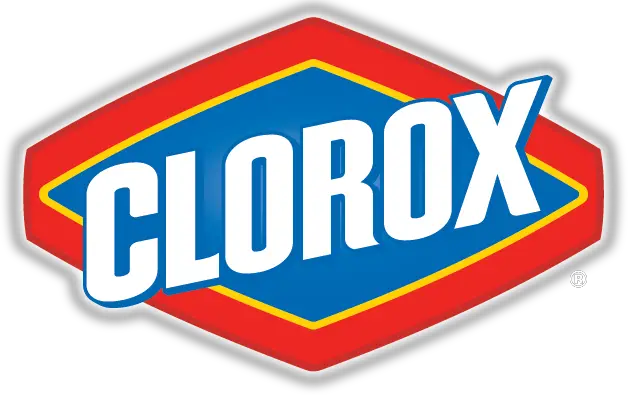WestportWiki / CC BY-SA
Burt’s Bees tops the list as one of the most recognizable brands in the field of green, clean, and eco-friendly products. The company manufactures a wide variety of personal care products made with natural ingredients. These products hold massive appeal for people who want chemical-free cleansing and makeup options.
So when the Clorox company purchased Burt’s Bees in 2007, loyal customers were understandably confused and even worried. The Clorox company’s aim in the 2000s was to move towards sustainability and naturally-derived products. But consumers were left wondering what effect Clorox would have on such a natural brand. After all, the product most synonymous with the Clorox brand is bleach, a chemical traditionally seen as noxious and to be used with utmost caution at home.
The sale was a bit of a risk for both companies involved: Clorox spent $913 million to acquire Burt’s Bees, whose 2006 retail sales came to $250 million. Burt’s Bees, on the other hand, risked losing their long-standing reputation as a powerhouse of natural personal care items.
Despite initial fears, Clorox has improved its sustainability levels, and as of 2019, it ranked number seven on Barron’s “100 Most Sustainable U.S. Companies” list.
Let’s take a look at how Burt’s Bees got their reputation, and what that reputation did for the larger corporation, Clorox.

The Beginning Of Burt’s Bees
Burt Shavitz was a beekeeper in Maine when he met single mother Roxanne Quimby. Together, they started using the extra wax from Burt’s honey to make candles in 1984, and earned $20,000 in their first year. The brand as we know it took off in 1991 when Roxanne added lip balm and other personal care items to their product line. Business picked up, and soon they moved from a kitchen in Maine to a former tobacco warehouse in North Carolina.
The couple expanded into hair care, dental care, and baby products throughout the next decade. Not only was their success steadily growing, but they were also showing the world how large companies could be eco-friendly. Roxanne Quimby, for instance, donated roughly $75 million worth of land to the National Park Service. As a company, the founders set a goal of sending zero waste to landfills by 2020. They also diligently worked to cut electricity and water usage from their factories.
By the time Clorox purchased Burt’s Bees, they were operating worldwide and had nearly 200 products on store shelves. The acquisition held a lot of potential for Burt’s Bees. They could see a jump in production growth, their access to resources would expand, and they could help promote sustainable business practices. That said, there was a risk in aligning themselves with a chemical company.
Burt’s Bees addressed this potential issue head-on. They released a statement to reassure their customers could continue to rely on the company’s standards and values. Their “Greater Good” philosophy—”good for you, good for us, good for all”—would still be the company’s top commitment.
Skeptical of a Likely Success
At the time of the acquisition, Clorox had been one of the top names in liquid bleach for nearly a century. But the company understood that customer demands were changing. More and more people were leaning towards environmentally-friendly and family-safe products for their households.
Clorox decided to make the effort to match customer needs. Burt’s Bees has always been one of the most recognizable brands in sustainability and environmental protection. That reputation made Burt’s Bees a perfect partner to help Clorox make the transition.
Nonetheless, there was a lot of trepidation from long-time customers. Would Burt’s Bees still be a trustworthy bastion of naturally-derived wellness? After all, Burt’s Bees’ customer base had come to love and trust them. Even employees were skeptical. After the acquisition, many people were inexplicably convinced Clorox had changed formulas for products such as the beloved Burt’s Bees lip balm. They claimed it was no longer the quality customers had come to expect.
Customers were suddenly unhappy with the texture, smell, and taste of various products. Aside from speculation in comment sections and personal blogs, however, there was no evidence of any significant changes. Burt’s Bees indirectly refuted the speculation about changes and decline in quality. According to the website, all ingredients used to this day are naturally derived.
In response to doubts and fears, Clorox made an even bigger move to prove to consumers their dedication and commitment to cleaner, healthier products.
Clorox Steps Up To The Plate
About a year after acquiring Burt’s Bees, Clorox launched Green Works. This new line of cleaners was intended to cleanse and sanitize just as thoroughly as other products, but without hazardous fumes and chemicals. Ingredients were all plant or mineral-based, naturally derived, and biodegradable.
Creating a natural cleaning line was a step in the right direction. On its own, though, it wasn’t enough to stop accusations of “greenwashing.” It’s common for large corporations to put the majority of their effort and money into marketing themselves as an environmentally-friendly business. The main focus is on appearances rather than making the necessary changes to lessen the company’s environmental impact. Many skeptics believed Clorox was greenwashing with the release of Green Works. Despite the accusations, Clorox continued to show their commitment.
They sought to endear themselves to environmental groups. They partnered with The Sierra Club, one of the oldest environmental organizations in the United States. The partnership was hugely important because, as The Sierra Club explained, they could “show that it was possible for a big company to take the first steps toward a greener future, and consumers could live a little greener every day.” Green Works provided donations to The Sierra Club, showing their financial commitment to their environmental goals.
It helped that Clorox had a history of being at least slightly involved in the green movement. Long before acquiring Burt’s Bees, Clorox was already working towards reducing single-use plastics. In 1988, they purchased Brita, a German water filter manufacturer. Brita produced filtered jugs, tap filters, and eventually personal filtered water bottles. These products offer consumers an alternative to bottled water and single-use plastic. According to their website, one Brita filter eliminates the need for 300 standard plastic water bottles. More recently, they’ve begun to offer recycling for customers’ used filters as well..
Sustainable Sourcing
In joining Clorox, Burt’s Bees brought with them several green practices, many of which have been adopted by their parent company. One of those key practices was sustainable sourcing.
Burt’s Bees sourcing manager Shannon Hess was promoted after the acquisition, becoming the sourcing manager for the entire Clorox company. She focused on a number of measures to ensure materials were sustainably sourced.
For example, Clorox tracks the carbon footprint of all its upstream suppliers. This is no small feat since it has thousands of suppliers across all their products. They even developed a scorecard that encourages their sources to report and work to reduce their environmental impact. Clorox’s initial focus was on creating sustainability within their factory, but Hess helped to broaden those goals.
The mega-brand is also transparent about the sourcing of complicated ingredients, such as fiber. Their goal when using fiber is to minimize their environmental impact and use recycled fiber when possible. Clorox’s website clearly notes which products use wood-based fiber. While its suppliers use 100 percent sustainable tree-based fiber, Clorox is still working towards reducing the environmental impact in this area.
Clorox also addresses the use of controversial ingredient palm oil in some of their products. Their use is mostly limited to derivatives of palm oil and accounts for less than 0.01 percent of palm oil produced annually. All of their palm oil is Sustainable-Palm-Oil certified, and they’re continually committed to improving their impact.
Ensuring sustainable sourcing has always been a hallmark of Burt’s Bees. Expanding the practice to the entire Clorox company is a tremendous step forward in their environmental goals.
Waste Management
One of the most obvious ways for anyone to reduce their environmental impact is to reduce garbage and wasted resources. In 2012, Clorox created a goal to reduce the amount of solid waste sent to landfills by 20 percent. They also planned to have 10 zero-waste-to-landfill sites. According to their website, they’ve reduced solid waste to landfill by 11 percent on an absolute basis, and 21 percent on an intensity basis.
Much of this reduction can be attributed to another practice that Burt’s Bees brought with them—dumpster diving. This practice has helped Burt’s Bees reduce their landfill contribution to practically zero. Everything is recycled, repurposed, or composted instead of heading to the landfill. Clorox has added this practice to many of their factories and offices.
On dumpster diving day, employees gather in the parking lot and empty dumpsters onto the ground. From there, they sift through the trash, separating items that can be recycled or composted. Once the sifting is done, they work together to devise action plans to reduce the recyclable or compostable items that end up in the dumpster. According to The Guardian, every factory that has implemented this practice has seen an immediate reduction of at least 50 percent of waste to landfills.
Bleach Isn’t All Bad
The changes and encouragement that Burt’s Bees has brought to the Clorox company are far-reaching. But even its flagship product is a part of its environmental efforts. The Clorox website gives several examples of how bleach can help with critical issues. For example, the California Department of Forestry uses Clorox bleach to prevent the spread of a tree-killing pathogen. Not only did Clorox donate the bleach, but they funded a program to help tree-planting groups.
Another example is Clorox’s commitment to protecting endangered frogs. Clorox works with Animal Planet to raise awareness about a deadly fungus that is harming frog populations. All the tools that are used when rescuing frogs are disinfected using Clorox bleach. They’ve also helped the California Rice Commission with fungus issues. The fungus was preventing rice crops from germinating. Clorox provided the product they needed to control the fungus.
One of their most important philanthropic efforts is the Safe Water Project. They provide disinfecting bleach to improve access to clean drinking water. The project started in Peru and has more recently expanded to Kenya and Uganda. Bleach treated water destroys 99 percent of bacteria and stays uninfected for 24 to 48 hours.
Unexpected Benefits
While Clorox has benefited dramatically from the green influence of Burt’s Bees, the benefits go both ways. With the expansion of their research and development team, Burt’s Bees was able to create more innovative products and also learn from already existing Clorox expertise.
For example, using technology Clorox originally used for Hidden Valley salad dressing, Burt’s Bees was able to vastly improve their moisturizing lotion. Typically, lotions derived from natural products are liquidy, which makes absorption and moisturization difficult. Using this salad dressing technology, they were able to make a thicker lotion that moisturizes skin for up to 24 hours.
Financial Benefits
The environmental benefits have paid off for both companies, as finances continue to grow. Since being bought out by Clorox, Burt’s Bees revenues have grown by double digits almost every year. Meanwhile, Clorox has saved at least $15 million due to their sustainability efforts. By 2025, the company aims to make all its packaging either reusable, recyclable, or compostable.
For 2020, Clorox anticipates flat to two percent sales growth. The continued growth is mainly attributed to their innovation program. It has become clear that Clorox is as driven by environmental and sustainability goals as they are by financial ones. That may seem like a bold claim about such a large corporation, but in a world with the looming threat of climate change, it’s an important trait to find in a business.
WestportWiki / CC BY-SA
Final Thoughts
When Clorox acquired Burt’s Bees, it was a bit of a gamble on both sides. Instead, it has been wildly successful for both brands. Burt’s Bees has been able to grow while retaining autonomy, and Clorox got a leader in sustainability to help improve its own practices.
With its sustainable sources, waste management, and community engagement, Clorox is making a real difference. You can see the effect in other branches of Clorox, such as Brita water filters and Glad garbage bags. Glad products may seem like an environmental liability, but they’ve invested in improving municipal garbage and recycling programs to reduce their negative environmental impact.
As of February 2019, Clorox was number seven on Barron’s 100 Most Sustainable U.S. Companies List, and it was their second year in the top ten. Their sustainability since 2011 has improved by a staggering 51 percent, and they passed this mark two years before its projected goal. Coming up in 2020, Clorox has reduced its greenhouse gas emissions by 33 percent and water consumption by 21 percent. Their energy consumption has been reduced by just under 20 percent.
These statistics can largely be attributed to the influence of Burt’s Bees. “We didn’t change Burt’s Bees,” Clorox marketer Matt Kohler noted, “Burt’s Bees changed us.”



